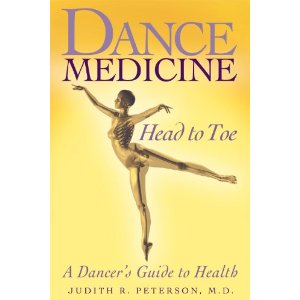Happy Holidays to all!
Today’s article is from Dr. Matt Wyon, Professor of Dance Science at the University of Wolverhampton, in Birmingham, England, who recently wrote an article on 4dancers.org on the importance of supplemental physical fitness training in dance. We are happy that Matt, who is also the Vice-President / President-Elect of IADMS (International Association for Dance Medicine and Science) has contributed a second article–this one on how important Vitamin D is for dancers. It’s something of interest to everyone, in terms of general good health, but recent research has shown that it may be especially important for dancers. Read on!
Hoping everyone has had a wonderful holiday season, with Nutcrackers abounding!
– Jan
_________________________________________________
 Dancers spend so much time indoors, with classes / rehearsals / performances, that they get little exposure to sunlight. Even when they live in sunny climates they don’t get enough sun exposure on their skin, because we automatically cover-up with sunblock.
Dancers spend so much time indoors, with classes / rehearsals / performances, that they get little exposure to sunlight. Even when they live in sunny climates they don’t get enough sun exposure on their skin, because we automatically cover-up with sunblock.
Direct sunlight is the main way we can increase vitamin D levels in our body. We can get the vitamin from our diet, through foods such as fortified cereals, oily fish and diary – but for the majority of us this is not enough to meet our needs. This has left vast numbers of people, including dancers, deficient in vitamin D.
Why is vitamin D important? It used to be known as the “bone hormone”, important for bone growth and development, but new research has shown that it is involved in lots of other important systems in the body, including the immune system. It also plays a part in diseases such as multiple sclerosis, rheumatoid arthritis and tuberculosis.
All of this is important for everyone, dancers included —but in addition, recent research points to an important link for athletes such as dancers. There is a connection between muscle strength and vitamin D: deficient levels of Vitamin D has been linked to decreased muscle strength. In our recent study at the University of Wolverhampton (Birmingham, UK), we gave vitamin D supplements to ballet dancers and saw that jump height and leg strength increased for those on the supplementation, compared with those who didn’t take any. The group who took the vitamin D tables (2000IU a day) also got fewer injuries over the 4 month period, probably because their legs were stronger.
In summary, as a dancer you should ask your doctor to check your vitamin D levels at least once a year. This is just a blood test and doesn’t take long but could have a major effect on your stayer healthy and dancing longer / dancing stronger.
Professor in Dance Science,
Research Centre for Sport Exercise and Performance, University of Wolverhampton, UK
National Institute of Dance Medicine and Science, UK
Photo courtesy of FreeDesignFile.com, under Creative Commons License 3.0








